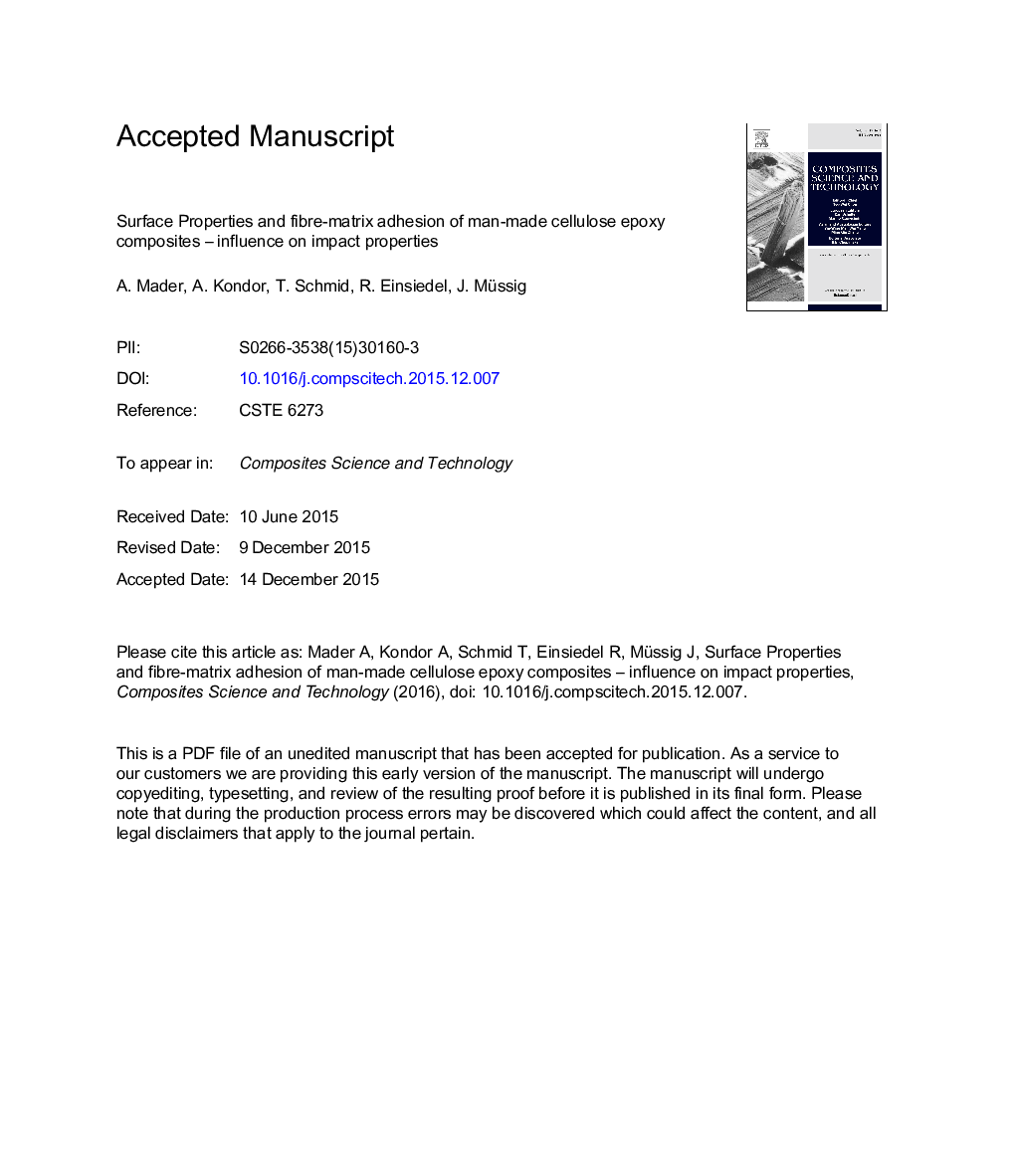| Article ID | Journal | Published Year | Pages | File Type |
|---|---|---|---|---|
| 7215190 | Composites Science and Technology | 2016 | 29 Pages |
Abstract
To reveal a possible explanation for this effect the fibre surface properties were investigated more closely. AFM measurements showed no differences in fibre surface topologies. However the physico-chemical properties of the fibre types differ. IGC measurements showed that the standard Cordenka fibre without avivage (“std wo a.”) possesses a slightly higher specific surface energy and base number (Kb) than the CR fibres without avivage (“CR wo a.”) resulting in a better adhesion to the highly polar epoxy. This is also shown by the pair specific interaction parameters (Isp) and the work of adhesion. Both are clearly higher for the epoxy - “std wo a.” pair. Accordingly the measured fibre pull-out lengths of the CR fibres are one order of magnitude higher than of the std suggesting a weaker interfacial shear strength between the CR fibres and epoxy. Within the same fibre type the samples without avivage show longer pull-out lengths. As a weaker fibre-matrix adhesion causes stronger crack deflection and energy dissipation these results correspond well with the previously measured Charpy impact strengths.
Keywords
Related Topics
Physical Sciences and Engineering
Engineering
Engineering (General)
Authors
A. Mader, A. Kondor, T. Schmid, R. Einsiedel, J. Müssig,
